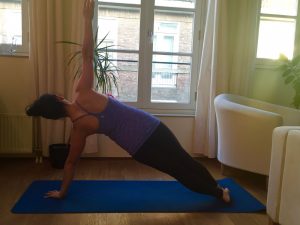In my pr evious blog The Importance of Core Stability I introduced core stability and touched on its definition and importance. In this post I want to spend time discussing some basic dos and don’ts when it comes to working on training the muscles around the lumbar and pelvis region.
evious blog The Importance of Core Stability I introduced core stability and touched on its definition and importance. In this post I want to spend time discussing some basic dos and don’ts when it comes to working on training the muscles around the lumbar and pelvis region.
I think one of the fundamental things when trying to improve your strength/conditioning/endurance in that region is ensuring correct technique of the exercise you are carrying out. There are plenty of exercises that can be followed but they have to be done properly if they are to be effective. Here are a few points to help ensure you are doing your core stability exercises correctly:
– Position of the stomach: When you are carrying out stomach exercises your stomach needs to be drawn inwards (i.e. making your stomach flat. You do this by taking your naval inwards towards your spine). This helps activate deep stabilising muscles. If you find your stomach is bulging outwards then the exercise is either too difficult for you or you are not doing it correctly.
– Breathing: Make sure you breathe when you do your exercise. It’s pretty common for people to tend to hold their breath when doing stomach exercises.
– Position of the body: Ensure your body is correctly aligned. Be aware of the position of your upper body and pelvis. If the exercise involves movement, always carry out the movement with control and as smoothly as possible.
– Repetitions/time: Some exercises require a number of repetitions, whilst some need holding for a length of time. Either way start with a realistic low number and gradually build either number of repetitions or time. If you start to feel your back when doing the exercise then stop and rest before starting on the next set of exercises.
– Sit ups/crunches: It is no longer advised to carry out the “traditional” sit up as they cause increased compression loads on the lumbar spine.
– Progression: The exercises for core stability need to be progressed from training specific isolated muscles to training as a full unit in more functional and dynamic activities.
– General exercises: If you brace your stomach (draw it inwards) when doing a specific exercise, for example a squat, you will immediately have a better technique.
These suggestions are designed for people who are already involved in a programme that addresses core stability. Bear these points in mind and they will enable you to focus on a good technique.
This brings me nicely onto introducing a few key, basic core exercises in my next blog. Until next time……
